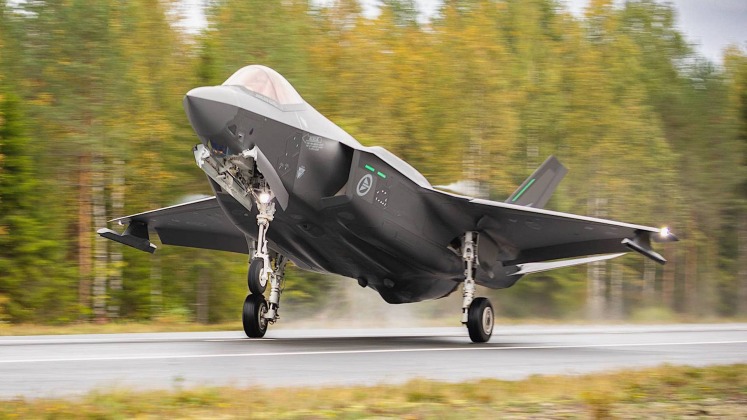News
A Game Changer For F-35A Operations: Norway Becomes First To Fly Stealth Jets From Highways

The Norwegian Air Force has become the first service in the world to operate F-35As from highways, which is a potential game changer for the survivability of the aircraft in the event of a major conflict when airbases are likely to be targeted. Chief of the Royal Norwegian Air Force Major General Rolf Folland observed to this effect: “This is a milestone, not only for the Norwegian Air Force, but also for the Nordic countries and for NATO… This demonstrates our ability to execute a concept of dispersal. Fighter jets are vulnerable on the ground, so by being able to use small airfields – and now motorways – [the Air Force can] increase our survivability in war.” The F-35A operations from highways took place as part of joint exercises between Norway and NATO’s newest member Finland, with Finnish highways notably used. Norwegian F-35s were notably also “hot pit” refuelled – meaning fuel was loaded while the fighters’ engines were still running which reduced the time required to get them back in the air. Although less fuel efficient, this provides a means of reducing sortie rates while also minimising vulnerability by reducing the time each aircraft spends on the ground.
The F-35A developed for the U.S. Air Force was designed to operate from traditional runways without an austere airfield capability, unlike the F-35B variant developed for the U.S. Marine Corps which is capable of short takeoffs and vertical landings from makeshift airstrips. The F-35B is approximately 50 percent more costly, however, and has much higher operational costs, a much shorter range, a smaller weapons payload and a significantly inferior combat capability. The ability to deploy F-35As from highways has the potential to revolutionise the survivability of American and allied fleets, with airfields hosting the aircraft from Korea and Japan to the United Arab Emirates and Eastern Europe all expected to be key targets for enemy missile strikes in a war’s initial stages. The ability to use “hot pit” refuelling to increase sortie rates can also serve as a key force multiplier particularly in a war’s early hours, allowing even smaller F-35 units to fly far more missions in a given time period. The importance of the ability to deploy from makeshift airfields with strained logistics was recently demonstrated by the Ukrainian Air Force, which flies Soviet Su-27 and MiG-29 fighters and Su-25 attack jets all of which are famously well suited to austere airfield operations.

Regarding Finland’s own preparations to use highways for fighter operations, a Finnish Defence Forces press release on the exercises observed: “The Air Force trains regularly operations from other than a home base to be capable of a quick dispersal across the country, when necessary… Operation at road bases is part of the training of all Air Force pilots.” Finland itself placed its first order for F-35s in December 2021, 16 months before it joined NATO, with experience exercising alongside Norwegian F-35s is expected to familiarise the Finnish Air Force with how the next generation stealth aircraft operate. Finland notably paid around 25 percent less for its F-35s than Norway did as it will receive more advanced models from later production batches which are manufactured more efficiently on a larger scale, while unlike Norway it is not a partner in the program meaning it does not have joint ownership of key related technologies. Although operating Soviet fighters during the Cold War, namely MiG-21s, Finland today operates F-18C/D Hornet fourth generation fighters which its 64 F-35As currently on order are expected to replace. The country was revealed in May to also be in talks with the United States to host U.S. Air Force F-35 units, which would be well positioned to conduct strikes on Russia’s Western and Arctic regions.












